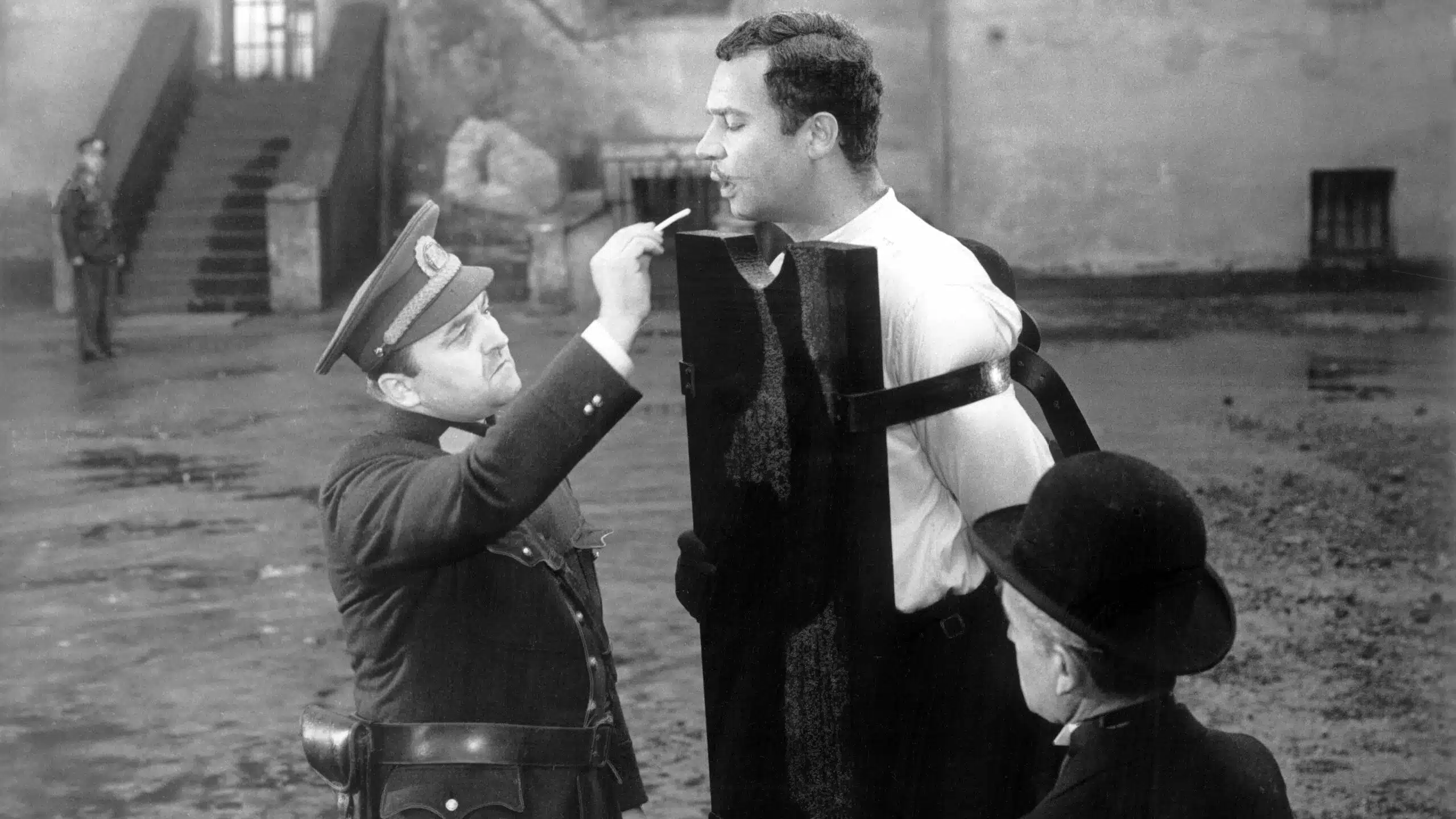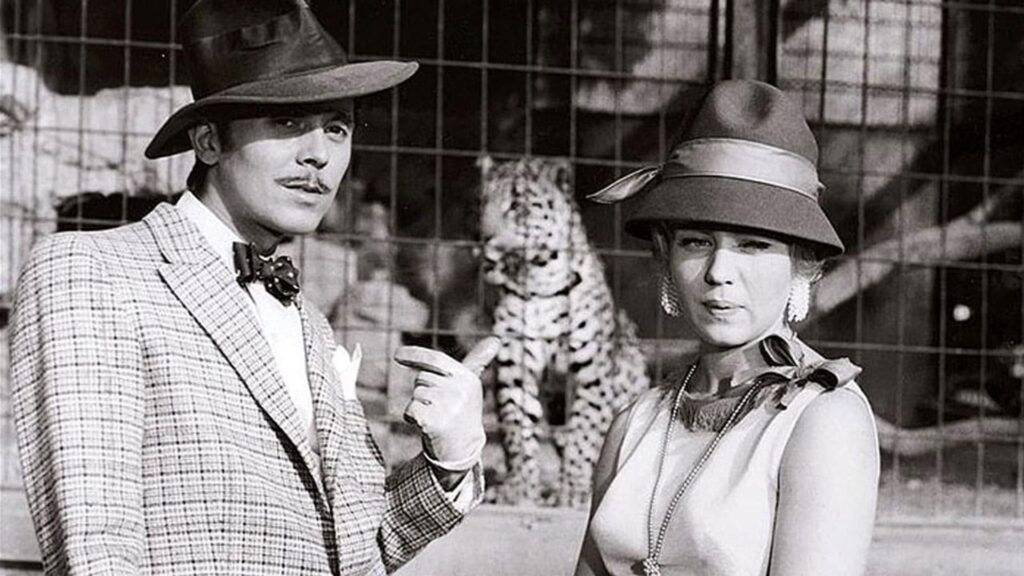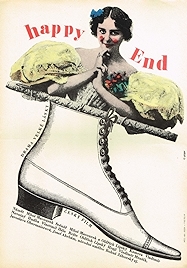If you’ve never heard of Oldrich Lipský before, here’s your chance to get to know him. Second Run, purveyors of overlooked European movies, are re-releasing Happy End, Lipský’s 1967 comedy. Alongside other Lipský titles – The Mysterious Castle in the Carpathians, I Killed Einstein, Gentlemen and Adele Has Not Had Her Supper Yet – Happy End sounds almost commonplace. Do not be taken in.
Lipský lived from 1924 to 1986 in Czechoslovakia (now Czechia or the Czech Republic) and made comedies suffused with Dada, the surreal and magical realism, the sort of weird stuff that’s often the refuge of the scoundrel.
But like fellow Czech (though ten years younger) Jan Švankmajer, Lipský does weird for a purpose and there’s always a larger idea hiding behind the kooky visuals.
Happy End (or Šťastný konec in Czech) is a brilliant time-travelling comic conceit, the story of a life lived backwards. It’s The Curious Case of Benjamin Button with smarts, if you like, except done on a tiny budget, with hardly anything to speak of in way of sets, locations or actors. And it’s shot in black and white.
It’s also short, at about 71 minutes, and it opens with the word “Konec” – The End – on the screen. From here Lipský runs a man’s life story backwards, from nuts to soup.
We first meet “Butcher” (first of many jokes) Bedrich Frydrych as he’s having his head cut off on the guillotine. Guilty of murder, he’d dismembered his wife (Jaroslava Obermaierová) after catching her with her lover (Josef Abrhám). But this all lies in the future (ie the past) – Lipský will get there in good time, eventually tracing Frydrych’s life all the way back to his childhood, as if everyone was born at the moment of death and then died, decades later, as a child.
Frydrych is played by Vladimir Menšík, a national treasure of Czech comedy, who here sports an appropriately Dali-esque moustache as he recounts his life story, often in voiceover. It’s a physically lively but expressively deadpan performance and Lipský gives Menšík some fantastic material to work with – the dismemberment is particularly funny, grotesque and fascinating. Later, his wife now alive and the two of them about to have sex together for the first time, there’s more funny, grotesque and fascinating crossover, which Menšik also handles brilliantly.
There are three different types of “backwards” in Happy End. Sometimes Lipský straightforwardly (or straightbackwardly maybe) runs the film in reverse, so that the words coming out of his characters’ mouths are unintelligible gibberish. Sometimes he runs the chronology of a scene backwards, but people speak their individual lines in everyday language – the film is running forwards but the make-believe is that time is running backwards. But most of the time Lipský runs his film backwards and the voiceover, usually by Menšík’s Frydryk but occasionally by other characters too, fills in the details as to what’s going on.
A new logic applies to scenes like these, where people drink wine and their glasses fill up, or Frydryk’s baby takes a bottle and it gets fuller of milk – “We were able to get 700 litres out of her a year”, the proud father says approvingly in voiceover.
This “reversed consequences” joke gets plenty of screen time – at the prison where Frydryk found himself after being “born” (ie guillotined to death, if forward rather than backward logic is applied) he has a job disassembling sacks. Later (or is that earlier?) at work at an abattoir we him un-butchering a cow. It starts as two sides of beef and finishes as a reanimated animal gambolling off towards a field.
It makes a lot more sense watching it than explaining it and the genius stroke is Lipský’s new logic, whereby Frydryk’s spins a plausible story out of what’s on screen rather than what we know of everyday cause and effect, in scenes painstakingly selected by Lipský so they can just about be stitched together by a convincing narrative.
The antecedents, to an extent, are the Dick Lester and Peter Sellers short (10 minutes) The Running Jumping & Standing Still Film, itself infused with the comedic genius of Spike Milligan, an everyday surrealist.
It came out the same year as Stanley Donen’s adaptation of Frederic Raphael’s Two for the Road, which is a far-less-experimental though fascinatingly non-sequential look at a relationship on the skids.
The descendants are François Ozon’s 5X2 (two lives observed in reverse), and Benjamin Button, neither of which has Lipský’s nose for a joke (Button could really have done with it).
Second Run are promising a 4K restoration in their new version. I haven’t seen it but I have seen lots of earlier releases. They’re a quality outfit dedicated to doing things properly and if it’s up to their usual standards it’ll be a very worthwhile purchase. As for me, I’m going to investigate Oldrich Lipský further.
Happy End aka Šťastný konec – Watch it/buy it at Amazon
I am an Amazon affiliate
© Steve Morrissey 2024


